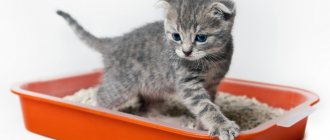Modern medicine has a huge number of methods that will allow you to determine the condition of your pet. Of course, it is better for the cat to remain healthy, but many factors can undermine the pet. A chemical blood test is one of the most important ways to identify pathologies and prescribe an effective course of treatment.
The method allows you to determine abnormalities in the functioning of the pancreas, liver or abnormalities in the metabolism. For many owners, understanding the abundance of medical phrases and terms is quite difficult. What does it mean that amylase is elevated in the blood of cats? Let's look at the issue in more detail.
What does it mean
The enzyme is required for efficient digestion of food. Most of it is produced in the pancreas. It promotes the decomposition of products in the duodenum. Based on the site of its secretion, it is also called pancreatic amylase.
The rest of the enzyme is produced in the parotid salivary glands. It, accordingly, contributes to the preliminary processing of food in the oral cavity.
Normally, amylase levels increase during daylight hours during meals. Despite the nocturnal lifestyle of cats, its number drops towards evening. The enzyme is divided into three types, but the alpha-amylase we are interested in is found only in blood plasma.
ATTENTION! Normal pancreatic amylase levels in cats range from 580 to 1600 depending on physiology.
An increase of even ten points is not critical. But if the level has increased several times, then you should definitely consult a doctor.
Study of pancreatic lipase in dogs (canine Pancreatic Lipase Immunoreactivity, cPLI)
In dogs, the sensitivity of cPLI for detecting pancreatitis is 65–82% depending on the severity of the disease, with a specificity greater than 95%. Studies show that in renal failure there is a minimal increase in cPLI concentrations, which is independent of prednisolone use and the presence of gastritis, in contrast to serum lipase activity. A study of serum PLI in dogs with exocrine pancreatic insufficiency showed values below the reference range, which allows us to conclude that the diagnostic sensitivity of the method is 100%.
Causes and symptoms of an increased rate
Let's turn to the most serious diseases that can cause increased amylase in cats. We also note the main symptoms by which you can directly or indirectly recognize an impending illness.
Diabetes
The disease is characterized by a lack of insulin. Diagnosed in older (over 7 years old) animals, in individuals with diseases of the gastrointestinal tract or hormonal imbalances. It is important that the last point can begin with ordinary vitamin deficiency and grow into a serious anomaly.
The main symptoms of the disease are as follows:
- rapid weight loss;
- deterioration of coat condition, decrease in shine;
- excessive urination, which causes the cat severe pain;
- bad breath;
- strong thirst;
- yellowing of the oral mucosa.
The veterinarian pays special attention to amylase levels, creatinemia and hyperglycemia. Glucose in a blood test will also be overestimated. There are two types of disease. The first type involves constant administration of insulin. The second type is limited to taking medications that lower blood glucose levels.
Volvulus
Due to the lack of blood flow to the stomach due to twisting of the auxiliary organ of the mesentery, bloating occurs. A huge lump forms. Intestinal volvulus brings severe pain. The cat owner cannot do without the intervention of a specialist.
The cause may be overeating and dangerous games after a hearty lunch. Main symptoms:
- dehydration;
- hard belly, when pressed the pet purrs loudly;
- vomiting blood;
- constipation;
- depressed mood, even to the point of refusing food.
Problems with elevated amylase in cats with severe gastrointestinal trauma lead to serious problems associated with volvulus.
Pancreatitis
The disease affects cats aged 8-10 years. Most often, animals with problems with the stomach, duodenum or gall bladder are susceptible to the disease. The following symptoms are observed with pancreatitis:
- drowsiness;
- apathy;
- dehydration;
- heart rhythm disturbance;
- abdominal colic;
- vomit;
- constipation or diarrhea.
In a blood test, in addition to amylase levels, the levels of calcium, glucose, cholesterol, and bilirubin are also determined.
Kidney failure
The disease is also typical for older cats. The symptoms of the pathology are as follows:
- apathy;
- increased salivation;
- elevated temperature;
- swelling;
- loss of appetite;
- bloody diarrhea;
- Frequent urination, but the discharge is small and clear.
The analyzes pay attention to the composition of urea and magnesium. In chronic renal failure, the level of calcium in the blood is extremely low.
Peritonitis
Increased pancreatic amylase in cats leads to inflammation of the abdominal cavity. The disease has two stages. The first one is fleeting and leads to the most tragic consequences. The second, with proper treatment, will save the animal’s life, but the disease will remain a reminder of itself for the rest of its life. Symptoms of peritonitis are as follows:
- apathy, loss of appetite;
- vomiting, weight loss;
- heat;
- breathing problems;
- convulsions;
Both older individuals and very young kittens are at risk. In difficult cases, dialysis is used. It is very important to follow the strict diet prescribed by your veterinarian.
Cirrhosis of the liver
The disease is dangerous because it is almost impossible to identify it in the early stages. The following symptoms most often occur in the final stage of the disease:
- sudden weight loss;
- unsteady gait, which easily turns into convulsions;
- partial loss of vision;
- attacks of uncontrolled aggression;
- urine takes on an orange tint;
- bloating of the abdominal cavity due to fluid accumulation;
- diarrhea alternates with constipation.
Various poisonings lead to cirrhosis. Often this is a manifestation of other ailments. For example, hepatitis. Even heart disease can lead to liver problems.
Hepatitis
The cause of the disease can be poisoning and infection with microorganisms. Let's note the main symptoms:
- profuse vomiting with bile;
- loss of appetite;
- diarrhea alternates with constipation;
- feces darken and urine becomes clear;
- strong thirst.
A comprehensive analysis will reveal not only an increase in amylase, but also in iron.
Mumps
The most curable disease from the proposed list. It is most often diagnosed in young individuals and is characterized by damage to the salivary glands. Mumps can be identified by the following symptoms:
- sudden weight loss;
- fever;
- problems with salivation due to enlarged salivary glands;
- the cat experiences pain when eating or opening its mouth;
- Blood and pus are often released with saliva.
Ovarian problem
With elevated amylase in the blood, it is possible to develop cancer of the genital organs in cats. The estrus time increases significantly (up to 1 month). The female rolls around on the floor, touching her stomach with her paws.
The main symptoms include the following:
- nausea and vomiting;
- constipation;
- refusal to eat;
- excessive urination in addition to prolonged estrus;
- heavy bleeding from the genitals;
In most cases, the disease is caused by incomplete sterilization or aggressive hormonal rehabilitation.
Pancreatic amylase
Pancreatic amylase is one of the types of amylase that is produced by the pancreas.
Synonyms Russian
P-amylase isoenzyme, pancreatic alpha-amylase, P-amylase, P-type amylase.
English synonyms
Pancreatic alpha-amylase, pancreatic AML, P-type amylase, P-type alpha-amylase, amylase isoenzymes, amylase isoforms.
Research method
Enzymatic colorimetric method.
Units
U/L (unit per liter).
What biomaterial can be used for research?
Venous blood.
How to properly prepare for research?
- Do not eat for 12 hours before the test.
- Avoid physical and emotional stress and do not smoke for 30 minutes before the test.
General information about the study
Amylase is a digestive enzyme that can break down carbohydrates.
The largest amount of amylase is found in the salivary and pancreas glands.
Amylase, which is produced in the pancreas, is pancreatic amylase (P-type) and is part of pancreatic juice. From the pancreas, pancreatic juice containing lipase passes through the pancreatic duct into the duodenum, where it helps digest food.
Amylase of the salivary glands - salivary amylase (S-type) - digests food starch in the oral cavity.
Normally, a small amount of amylase circulates in the blood. In this case, about 60% is salivary amylase (S-type), and the remaining 40% is pancreatic amylase.
When damage to the pancreas occurs, as in pancreatitis, or if the pancreatic duct is blocked by a stone or tumor, pancreatic amylase (P-type) begins to leak into the bloodstream in large quantities. There is no increase in salivary amylase activity.
Small amounts of amylase are also produced in the ovaries, intestines and skeletal muscles.
What is the research used for?
- An increase in the activity of pancreatic amylase in the blood without a change in the activity of salivary amylase confirms the pathology of the pancreas. For example, in acute pancreatitis, its activity in the blood can increase to 90% of the total amylase activity.
- For the diagnosis of pancreatitis in the postoperative period, when the activity of total amylase is increased.
- If pathology of the salivary glands, ovaries or bronchi is suspected.
When is the study scheduled?
- When the diagnosis of “acute” or “chronic pancreatitis” is confirmed.
- If you suspect a disease of the salivary glands and ovaries.
What do the results mean?
Reference values
| Age | Reference values |
| 1 – 10 years | |
| 10 – 18 years | |
| > 18 years old |
Interpretation of the results of the analysis for pancreatic amylase is carried out taking into account the assessment of the total amylase activity in the blood or urine. If the total amylase activity is increased and the activity of pancreatic amylase is decreased, then damage to the pancreas is unlikely and pathology of the ovaries, intestines, bronchi or other organs must be excluded.
Reasons for increased pancreatic amylase activity
- Acute pancreatitis. In this disease, the activity of pancreatic amylase can be significantly higher than normal and constitute a larger percentage of the activity of total amylase. However, in some patients with acute pancreatitis, amylase may increase slightly or even remain normal. In general, amylase activity does not reflect the severity of pancreatic damage in pancreatitis. For example, with massive pancreatitis, sometimes the death of most of the cells that produce this enzyme occurs, so its activity may not be changed.
- Chronic pancreatitis. With it, amylase activity is initially moderately increased, but then may decrease and return to normal as damage to the pancreas worsens.
- Decompensation of diabetes mellitus is diabetic ketoacidosis, both due to high sugar levels and due to the concomitant involvement of the pancreas in the pathological process.
- Trauma to the pancreas.
- Pancreas cancer.
- Blockage (stone, scar) of the pancreatic duct.
- Acute appendicitis, peritonitis.
- Perforation (perforation) of a stomach ulcer.
- Acute cholecystitis is inflammation of the gallbladder.
- Intestinal obstruction.
- Ruptured aortic aneurysm.
- Macroamylasemia is a condition where amylase binds to large proteins in the serum and therefore cannot pass through the glomeruli, accumulating in the blood.
Reasons for decreased pancreatic amylase activity
- Decreased pancreatic function.
- Cystic fibrosis (cystic fibrosis) of the pancreas is a severe hereditary disease associated with damage to the exocrine glands (lungs, gastrointestinal tract).
- Removal of the pancreas.
What can influence the result?
- Captopril, corticosteroids, oral contraceptives, furosemide, ibuprofen, and narcotic analgesics can increase amylase activity.
- Chronic renal failure sometimes leads to increased activity of pancreatic amylase.
- Elevated cholesterol can cause decreased activity of pancreatic amylase.
Important Notes
- In acute pancreatitis, an increase in pancreatic amylase activity is usually accompanied by an increase in lipase activity. The latter may be somewhat delayed, but lipase activity remains elevated longer.
- Amylase activity in children in the first two months of life is low; it rises to adult levels by the end of the first year.
Also recommended
- Total amylase in daily urine
- Serum total amylase
- Lipase
Who orders the study?
General practitioner, therapist, gastroenterologist, surgeon.
Signs of low amylase
A lack of amylase can also lead to problems with cat health. Let us note some diseases and their symptoms.
Pancreas problems
Reduced secretion of amylase leads to malfunction of the digestive organs. Let us note the symptoms that lead to pathologies in the pancreas:
- loss of appetite;
- diarrhea or constipation;
- changes in the color of feces and a sour, foul odor;
- bloating and excess intestinal gas;
- cardiopalmus;
- vomit.
The disease is typical for older cats.
This group also includes necrosis of the pancreas . In fact, this is the death of living cells. It is accompanied by the following symptoms:
- elevated temperature;
- severe vomiting;
- bloating;
- abdominal pain on palpation;
The lower abdomen turns blue. The death of pancreatic cells is associated with poor nutrition, abuse of cheap dry food, and excessive use of medications.
Cancer of the digestive system
A terrible disease, of course, cannot appear only because of a low level of amylase in the blood. But the very fact of hormone deficiency can clearly indicate an incipient disease:
- the mucous membranes of the digestive organs acquire a yellow tint;
- bloody diarrhea;
- constipation;
- gases in the intestines;
On the positive side, it can be noted that older pets with weakened immunity and disruptions in the hormonal system are susceptible to the disease.
Hepatitis
Unfortunately, a lack of amylase can lead to hepatitis. Among the main symptoms it is worth noting:
- weakness, unsteadiness of gait;
- vomit;
- the mucous membrane acquires a yellow coating;
- feces with blood.
Hepatitis is often caused by poisoning and infection by pathogenic microorganisms.
Myocardial infarction
Heart problems are also a consequence of low amylase. The disease exhibits the following symptoms:
- excitation;
- mucous membranes turn white, as do individual areas of the skin;
- chest pain.
Most often, myocardial infarction is preceded by heart disease and vasculitis.
How is the analysis carried out?
The main way is to take blood plasma for analysis. The test will allow you to determine deviations, determine the course of treatment and carry out proper monitoring of the animal’s condition.
There are several restrictions when taking the test. Firstly, the procedure is carried out on an empty stomach. At least 8 hours must have passed since your last meal.
Secondly, it would be better to invite a doctor to your home. Your cat may become agitated or aggressive in the clinic. In the arms of the owner with her favorite toy, she will feel calm and will easily give her paw for an injection.
Thirdly, if your pet is taking any medications, you should notify the doctor. Taking any medications can easily distort the results of the study.
ATTENTION! Amylase levels alone provide little information about health status. Only a comprehensive examination will allow you to make a correct diagnosis.
Elevated amylase in the blood of cats can cause many serious diseases. The owner should closely monitor the condition of the pet and, at the first suspicion, contact a specialist.











